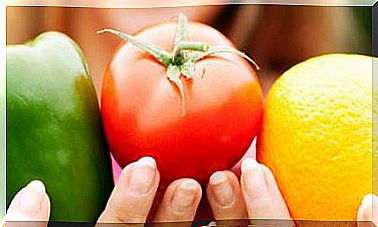Batch Cooking: 5 Vegetables That Help You Cook Less
Cooking meals for several days in advance allows us to prepare a healthier menu and frees us up time. These 5 veggies are ideal!

There are many vegetables that can help us cook less: it is batch cooking, which I already talked about in another article.
In this one I am going to focus on how to prepare some vegetables to have them made and incorporate them into any dish. They stand out because they are less delicate than others (such as spinach or chard), they are more versatile, they can be cooked in many ways, they hold up very well when frozen, they keep their shape … They are also usually very cheap in greengrocers and greengrocers and we can make good stock of them.
Pumpkin, potato, sweet potato, carrots …
They are very easy to roast in the oven and you just have to wash and cut. Take advantage and roast a good amount, everything that will fit on a large baking sheet.
How to cook them
- Preheat the oven to 200ºC.
- Wash the vegetables, peel them if you want and cut them into small cubes or medium pieces.
- Put them on the baking sheet, drizzle them with a little olive oil and sprinkle with a pinch of salt.
- Bake for 30 minutes at 200ºC with heat up and down. To check if they are done, prick a few with a skewer or fork. If they are tender you can take it out and let it cool.
How to keep them
Once cold, store them in troughs or freezer bags with a hermetic seal and put the date on them, so you will know how long they have been frozen.
In the fridge they will last about 3 days, also in a tightly closed container.
What to use them for
- When making a stew or stew, add them 10 minutes before the end of cooking. Your plate will be made much faster since the vegetables do not have to be cooked, only thawed and heated.
- Soups, creams and purees : just put a good handful in boiling water until they are thawed and heated. Then pass them through the blender to make creams and purees. In the case of soups it is not necessary.
- Mixed dishes : a little pumpkin, a handful of cereals, a handful of legumes, some fresh leaves, some seeds and a sauce. With this you already have a most complete and colorful combination plate. You can heat it separately and serve the portions next to each other for more color.
- Last minute dishes : prepare the container for when you are in a hurry. Just take a handful along with the rest of the things you put in. It will thaw on its own. Then you just have to heat it up.
Broccoli and cabbages
These greens and vegetables are tight, can be divided well into portions and hold up well to freezing and refrigeration.
One of the best ways to make them is steamed. They require a few minutes to be al dente.
How to cook them
- Bring water to boil in a steam saucepan (which does not reach the basket).
- Wash and cut broccoli, cauliflower and romanesco into medium pieces.
- Put everything that fits into the basket and cover it.
- After 8 minutes check how they are. If the pieces are tender but retain their shape, remove them now and let them cool.
How to keep them
Store in tins in the fridge (3-4 days) or in the freezer.
What to use them for
- Pasta and cereals with vegetables : just add a good handful of broccoli or cauliflower to your base of brown rice, quinoa, millet, pasta or whatever you have. They are already done, you just have to heat them.
- Stews, stews and stews : like other vegetables, they can be added almost at the end of cooking, just enough to thaw and heat up.
- Sauteed with legumes : add your pieces of broccoli or cauliflower along with the chickpeas, beans or lentils and sauté everything together until tender. You can also add a splash of soy sauce.
- Creams and soups : just put a few handfuls in boiling water and let them thaw. You can add more things you have: peas, leek, onion, etc. Then pass everything through the blender until a fine cream is left. In the case of soups, you can leave it whole.
- Sauces : You can make a broccoli, romanesco, or cauliflower sauce in no time. Thaw a good handful in a saucepan with boiling water, mix it with a béchamel sauce, vegetable milk or vegetable cream and beat it with the mixer. Add a little salt if necessary. In turn, this sauce can be stored in a small jar and it will last 2-3 days in the fridge.
Peppers of all kinds
Peppers are great to keep in jars in the pantry, in the fridge, or frozen. One of the best ways to prepare peppers for storage is by roasting or broiling them. Get yourself a good batch of your favorite peppers and prepare a large baking sheet.
How to cook them
- Preheat the oven to 210ºC.
- Wash the peppers very well. Wet your hands with olive oil and “massage” them whole to coat them with a thin layer. Put them on the baking sheet, all that fit, trying not to make large piles.
- Bake them at 210ºC for approx. 45 minutes or until skin is toasted and peppers “deflated.”
How to keep them
Take them out, remove the skin, separate the meat, put it in jars, filling them to the top, and close them well. This way they will last a couple of weeks in the fridge.
If instead of in boats you put them in containers, they will last 4-5 days. In the freezer, 3 months.
To store them in the pantry, you first have to sterilize the jars and lids. Put the peppers (do not go to the brim), put the lid on without closing and simmer in a saucepan for about 10 minutes. Then you can take them out and cover them. This way you can keep them in the pantry for up to 6 months (as long as the jars are hermetically sealed).
What to use them for
- Sandwiches and sandwiches : as simple as taking a few pieces of pepper as is or cutting it into strips to add it to any sandwich, sandwich or roll. As a base you can use hummus, fresh lettuce leaves, sliced olives, pickled gherkins, etc.
- Sauces and stir-fries : a roasted pepper gives life to many sauces and almost all the stir-fries that we make, with the advantage that it is already done, it only has to be heated and lightly fried with the rest of the ingredients. In the sauces it can be added as is, cut, chopped or beaten with the mixer.
- Cannelloni and lasagna : it is a great resource to fill these pastas. Also mix it with textured soy and other vegetables (chives, leeks, spinach …) for an explosion of flavors and colors.
- Salads : both hot and cold, just add a few strips or a few pieces of roasted pepper.
Zucchini
Zucchini can be eaten raw perfectly. One of the current trends is slicing them with a spiralizer and turning them into raw zucchini spaghetti. This is a good way to take advantage of a whole zucchini and, incidentally, make a different and very tasty meal.
But if we want zucchini already prepared for several days or weeks, we can cook them previously on the grill for a more al dente texture and a more marked flavor.
How to cook them
- Wash the zucchini and cut them into cubes or medium pieces, which are not too thin.
- Heat a little olive oil in a large nonstick skillet and toss in all that will fit. Sprinkle with salt.
- Sauté them until they start to brown and remove them. Add more batches of zucchini.
How to keep them
When they cool, you can keep them in a tightly closed container in the fridge for up to 4 days, or in the freezer for up to 3 months.
What to use them for
- Dishes with legumes : whether they are sautéed, stews or curries, add a good handful of grilled zucchini. It will take very little time to heat up.
- Pasta and rice : accompany any pasta or rice with these pieces of zucchini just as you would, for example, with a ready-made stew. Of course you can use more vegetables that you have in storage.
- Creams and purees : as in the previous cases, just put in boiling water until they soften and warm and go through the blender. This way you can make yourself a cream in a moment. And what is left of cream can be refrigerated or frozen.
Aubergines
They are more delicate than other vegetables, their interior is almost all air, they need cooking to consume them and they tend to absorb a lot of oil if we make them in the pan.
One of the best ways to make them, if we want to preserve the shape of the pieces, is steamed. If not, baked, which will give us a very soft and tender aubergine meat that melts when picked up, but very tasty.
How to steam them
- Bring water to a boil in the steam pot.
- Wash the aubergines and cut them into medium pieces.
- Put all that fit in the basket, cover it and leave it for 6-8 minutes. To know if they are done, prick them with a skewer.
- Let them cool down and store them in a tightly closed container. They will hold you in the fridge for 3 days. In the freezer for a couple of months.
How to cook them in the oven
- Preheat the oven to 200ºC.
- Wash the aubergines, remove the stem and cut them in half lengthwise. Poke the exposed surface or make a few cuts with a knife. Sprinkle with salt. Put as many as will fit on your cookie sheet, even if they are a little tight.
- Bake at 200ºC for 35 minutes or until tender (you can poke them with a toothpick to make sure).
- Let them cool down before storing them in tightly closed containers. In the fridge they will last up to 4 days, and in the freezer 2-3 months. If you are going to freeze them, it is better to do it in pieces. You can put each one in a freezer bag.
What to use them for
- Lasagna, cannelloni, pizzas … For any of these preparations, a roasted aubergine is great. Carefully remove the meat and add it to the filling. For pizzas, place it on top.
- Empanadas and cocas : steamed or roasted aubergine serves the same way, depending on the size of the rest of the ingredients. For a finely chopped vegetable coca, use the roasted aubergine, incorporating it into the sauce. For an empanada you can directly put a good handful of steamed aubergine.
- Sauteed : use steamed aubergine. The chunks will be great in any stir-fry you make, be it with vegetables, legumes, or with rice or other cereals.
- Vegetable patés : babaganoush for example is made with roasted aubergine. You can prepare different types of babaganoush by changing ingredients or add the roasted eggplant to your hummus.









